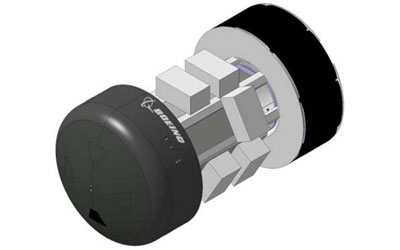Apollo: what didn’t get builtby Taylor Dinerman
|
| No one at NASA imagined at the time that the US would make six manned landings on the Moon and then abandon the effort. |
Von Braun rejected not only the Earth Orbit Rendezvous but also a direct Moon landing option favored by JFK’s science advisor, Jerome Wiesner, and the Nova option, which involved building a new rocket powered by eight F-1 engines, which each generated a million and a half pounds of thrust. The choice was driven by practical requirements, including the fact that the development of what was to become the Saturn 5 was already well underway, and the need to reduce the number of what were called “managerial interfaces”—an interesting term, for 1962:
The plain result of too many interfaces is a continuous and disastrous erosion of the authority vested in the line organization and the need for more coordination meetings, integration groups, working panels, ad-hoc committees, etc. Every effort should therefore be made to reduce the number of technical and managerial interfaces to a bare minimum.
Wise words then, and now.
In accepting the Lunar Orbit Rendezvous plan, von Braun assumed that as part of the plan, NASA would develop “an unmanned, fully automatic, one way C-5 logistics vehicle,” a version of the Saturn 5 designed to deliver cargo to the surface of the Moon. Such a vehicle would only be needed if NASA were planning to keep astronauts on the Moon for a lengthy stay.
No one at NASA imagined at the time that the US would make six manned landings on the Moon and then abandon the effort. A few years later, while touring the Michoud facility in Louisiana where they were building the Saturn 5 first stage, LBJ is supposed to have told Wally Schirra, “We have this great capability, but instead of taking advantage of it, we’ll probably just piss it away.” This is always the great danger with these projects that once the original impetus is lost, it’s hard to maintain the momentum.
This is why the Aldridge Commission and others have placed so much emphasis on making sure the program is “affordable and sustainable.” This is going to be difficult, when plenty of people are pushing for NASA to spend more time and effort on Earth observations or aeronautics. If the Vision is to work, these areas will have to lose some of the NASA funding they otherwise would have received. Fortunately, there are other government agencies which should be able to pick up some of the tab.
The fact that NASA never did build the logistics version of the Saturn 5 is an object lesson on what could go wrong with the Vision. They could build all the elements of the CEV—perhaps on an accelerated schedule, as the new Administrator seems to want to do—but they could still fail. Even if they do manage to get back to the Moon before 2020, if they do so without having built a supply ship, then we will, once again, have “just pissed it away.”
What is needed is a way to insure that, whatever the inevitable future funding and scheduling problems, NASA will stick to the goal of building a permanent lunar habitat. It might be that this goal would have to be made part of a new, legally-binding NASA charter, or it could be made part of a multi-year CEV funding appropriation. A goal, written into the budget over several years, would not only force NASA to keep to the objective, but would obligate the contractors as well.
| What is needed is a way to insure that, whatever the inevitable future funding and scheduling problems, NASA will stick to the goal of building a permanent lunar habitat. |
Apollo was a huge success in terms of the Cold War. It proved to our adversaries that America could accomplish great and difficult goals so that, when the US said it was going to develop long-range precision-guided weapons which could hit Soviet tank armies in Poland, or nuclear warheads in space, they knew that, if the US put out the effort, it could indeed do it.
Yet, as a step towards expanding humanity into the solar system, Apollo was a false start. The lesson now is that unless the basis for long-term operation beyond Earth orbit is laid now, and made a fully integrated goal, things might once again go wrong. There is a temptation to interpret to goals of the Vision in as narrow a way as possible. Some bureaucrats at NASA might use the first setbacks to the program to cut out those parts that would make a Moon base truly sustainable over the long run.
There should be no question that NASA will build a Lunar supply ship as part of the CEV development process. The scientific technological, political, and, ultimately, economic advantages of a permanent Lunar base must not be lost. When America goes back to the Moon it must be to stay.
